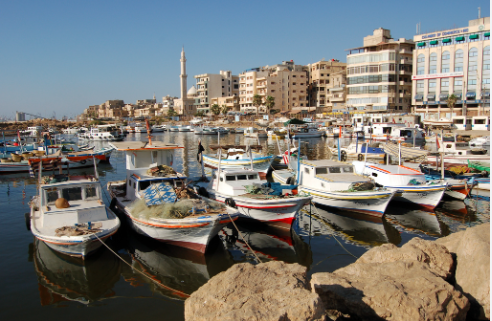Tartus Governorate is located on Syria's western coast, south of Latakia Governorate, spanning an area of approximately 1,890 square kilometers. Tartus is considered one of the important coastal governorates, renowned for its natural beauty, blending sea and mountains, making it a distinctive agricultural and tourist hub.
1. Historical Overview
Tartus boasts a history spanning thousands of years, having been a strategic location on the Syrian coast and influenced by numerous civilizations like the Phoenicians, Romans, and Byzantines. The ancient city of "Arwad" was famous and witnessed many significant historical events, while maintaining its status as an important commercial port throughout the ages.
2. What is it Known For?
- Tourism: Thanks to its stunning coastlines and sandy beaches, the governorate attracts a large number of tourists, both domestic and international.
- Agriculture: It's renowned for cultivating citrus fruits, olives, vegetables, and various fruits.
- Traditional Industries: Such as pottery and traditional textiles.
- Sea Fishing: One of the important economic activities.
3. Key Tourist and Historical Landmarks
- Tartus Citadel (formerly Arwad Citadel): A historic castle dating back to the Crusader era.
- Old Port: Has a long history as a strategic commercial port.
- Beautiful sandy beaches in areas like Baniyas and Tartus.
- Mountain villages that reflect authentic Syrian architectural heritage.
4. Geography and Climate
Tartus is characterized by its diverse geography, ranging from Mediterranean coastlines to coastal plateaus and mountains. The climate is moderate Mediterranean, with rainy winters and warm summers, making it suitable for both agriculture and tourism.
5. Culture and Customs
The governorate preserves diverse cultural traditions, including weddings and religious and social celebrations. The local cuisine is rich in seafood dishes and seasonal fruit dishes. Handicrafts and traditional arts play a role in preserving the heritage.
6. Economic Activities
Tartus relies heavily on agriculture, tourism, and sea fishing. There are some light industries, such as food processing and handicrafts. Domestic and international tourism contribute to supporting the local economy.
7. Major Cities and Towns
- Tartus (Capital)
- Baniyas
- Al-Qadmus
- Safita
- Duraykish
8. Infrastructure and Services
The governorate has a road network connecting it to neighboring governorates and the coast. Health and educational services are available, with multiple hospitals and medium-sized health centers. The tourism infrastructure is continuously developing with hotels and tourist facilities along the coast.
9. Current Situation and Challenges
Tartus enjoys relative stability, which has helped maintain economic activities and services. The governorate faces challenges in developing infrastructure and enhancing employment opportunities, in addition to protecting the coastal environment. Governmental and local efforts aim to improve living standards and develop tourism.

